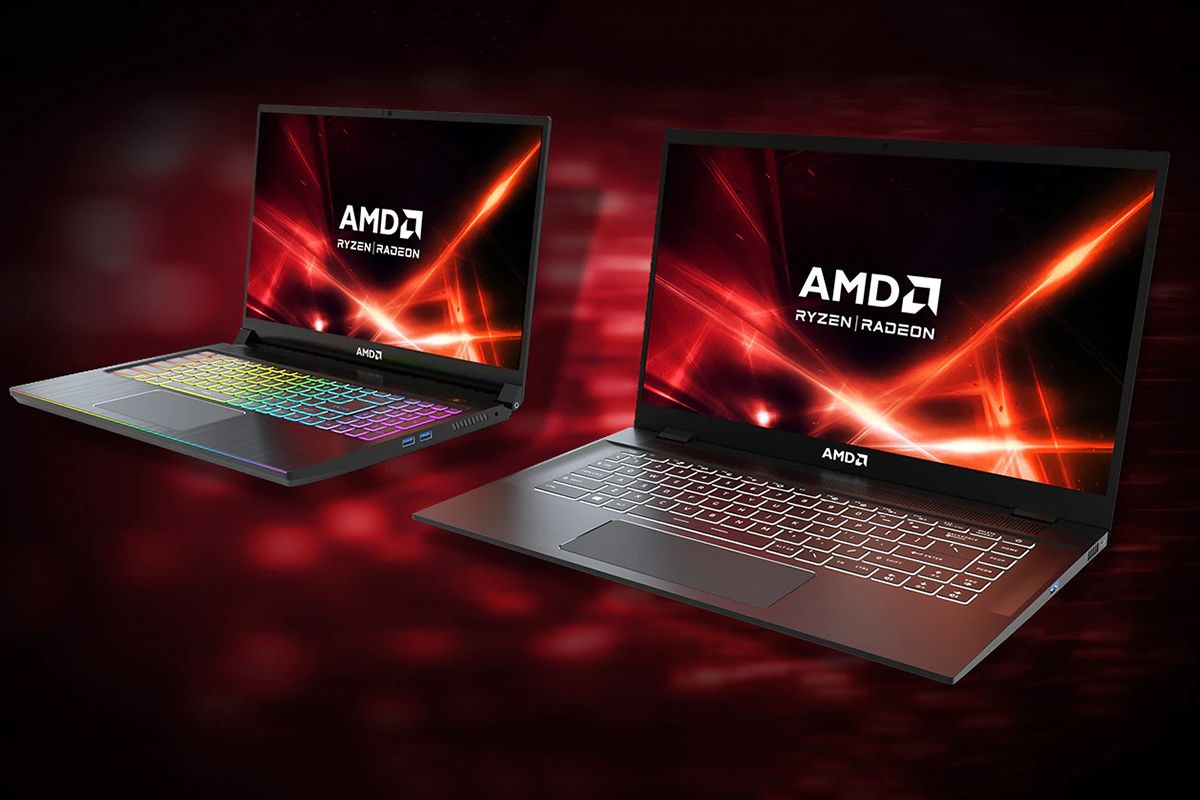AMD has finally announced the arrival of its new graphics chips for laptops: the new Radeon 6000M series based on the RDNA 2 architecture. First teased at CES 2021, a total of three chips under the series have been announced at Computex 2021, including the Radeon RX 6800M, the RX 6700M, and the RX 6600M.
AMD says that these are the fastest graphics chipsets for laptops that they have ever made, with the 6800M capable of handling AAA titles comparable to NVIDIA’s RTX 3080 mobile. It comes with 40 compute units and ray accelerators, 12GB of GDDR6 RAM on a 192-bit interface, and a 96MB infinity cache. The Radeon RX 6700M will have 36 compute units and ray accelerators, 10GB of GDDR6, 160-bit bus, and 80MB cache. The Radeon RX 6600M has 28 compute units and ray accelerators, with 8GB of GDDR6, 128-bit bus, and 32MB cache. The RX 6800M can handle today’s popular gaming titles, including Battlefield V, F1 2020, Overwatch, and Apex Legends at 120fps, running at 1440p resolution at high settings. The RX 6700M, on the other hand, promises 100fps at 1440p, while the RX 6600M is capable of 100fps at 1080p resolution.
As mentioned, the new mobile GPUs are based on the RDNA 2 architecture that currently powers AMD’s desktop-class Radeon RX 6000 series and chipsets used on current-gen gaming consoles, the Xbox Series X|S and the Sony PS5. This essentially means that the new Radeon 6000M series supports DirectX ray tracing along with Smart Access Memory which is similar to resizable BAR.
AMD has also confirmed the TDP ratings for the three GPUs. The RX 6800M will have a TDP of 145W, while the RX 6700M and the RX 6600M will have 135W and 100W, respectively. These can differ depending on how the manufacturers tune the new mobile GPUs for their laptop designs. These new GPUs will also support AMD's SmartShift power balancing when paired with a Ryzen mobile CPU.
Additionally, AMD also announced that it is planning to bring its FidelityFX Super Resolution upscaling framework later this year. Basically, it is based on a similar concept as NVIDIA's DLSS (Deep Learning Supersampling) technology, which uses deep learning AI to upscale lower-resolution images to a higher-resolution for display on higher-resolution monitors. AMD hasn’t shared any technical details but says that FidelityFX will be supported by a wide range of Radeon GPUs, Ryzen APUs, as well as Nvidia's GeForce series. Further details, including a list of supported games, will be revealed on June 22.
Expect the new AMD mobile GPUs to be available from various OEMs, including ASUS, MSI, Lenovo, and HP, in the coming days. The first laptops featuring the new Radeon mobile GPUs paired with the Ryzen 9 5900HX CPUs include the ASUS ROG STRIX G15 and the HP Omen 16.

